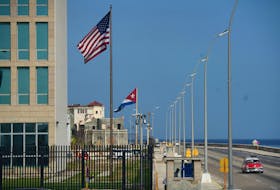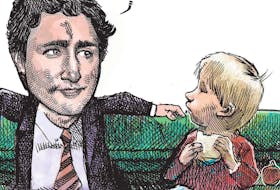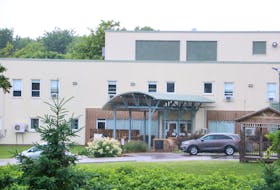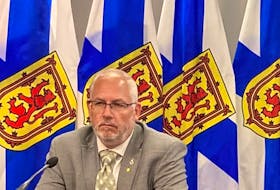Nova Scotia’s twice misnamed health system has been compared to a big balloon. When squeezed in one place, a bulge pops out in another.
Take the analogy a bit further, and you find a balloon covered with hands, some applying pressure, others trying to hold it to a shape. Eventually the balloon – a conglomerate mislabelled a ‘system’ – will either burst, or somehow attain equilibrium and – if only briefly – a discernable form.
The $4.4-billion ailing Nova Scotian industry that we insist on calling health care despite its almost exclusive obsession with ill-health, continues a transition toward something that remains amorphous despite all those hands trying to press it into some order.
Collaborative care, the utopian village of collegial, multi-disciplinary professionals seamlessly streaming patients along a pathway to a better state of being, is the province’s panacea in primary care. Primary care has been in critical condition for so long that Nova Scotians understand it’s what family doctors do, but only if you have one.
The bureaucratic planners know, but won’t say, that there will never again be enough family doctors to go around like there were in the early decades of Medicare. The physician-supply funnel no longer flows with cherished general practitioners and competition for docs of all description is a high-stakes international game that Nova Scotia plays in the minors.
It’s been 25 years since accountants convinced policy-makers that double-digit annual cost increases incurred by the Health Department were unsustainable, igniting the first “health care crisis” in Nova Scotia, not coincidentally with the downfall of John Savage’s Liberal government.
The province’s amalgam of health-related services has been in various states of barely controlled chaos ever since. When another Liberal government arrived in 2013, bringing an untested idea that the whole thing was over-administered, it unwittingly pulled back the curtain to expose a sick old man where the wizard was supposed to be.
That stark reality is visible to all who care to see.
Crisis management acts as a surrogate for system planning and is mostly manifest by money cast in the general direction of any noise that attains sufficient volume to be discernable by the people. And so, the racket is at least muffled.
Thanks to a windfall of past-due offshore gas receipts, the province had enough money this year to erect a sound barrier. That came in the form of increased payments to family doctors, including incentives to those willing to supersize their practices by plucking some people off the list of the doctorless.
Yet, the list lengthens.
A master of understatement, the Health Department, informs us that access to primary care “can be a challenge for some people.”
Measuring the health outcomes of Nova Scotians is reliably depressing, so the department trades in quantitative action rather than qualitative results.
There are now more than 50 collaborative family practice teams in Nova Scotia, the department reports, adding it is working to create more.
“In 2016-17, we invested $3.6 million to hire 22 nurse practitioners and family practice nurses to join practices. In 2017-18, we invested $6 million to hire 39 more nurse practitioners, family practice nurses, social workers, and a physiotherapist to join collaborative family practice teams.”
The department asks Nova Scotians to stay tuned for “further investments in the future,” which, it must be said, are preferable to “investments” in the past.
The province and the Nova Scotia Health Authority are betting the house money on the collaborative practice model to replace the more familiar but too-scarce traditional family practitioner.
In the meantime, thousands of Nova Scotians have become dependent on walk-in clinics which provide what the department calls a “valued transactional” service, but not the continuity of care people receive from a family doctor to call their own.
For that reason, doctors practising out of walk-in clinics aren’t eligible for the various fee increases family docs received last spring. At least one walk-in, the Aberdeen Clinic in New Glasgow, is closing for a month to reassess its future, partially as a result of that decision.
Whether walk-in clinics figure in the future of primary care in Nova Scotia is, like so much else, uncertain. Ideally, they would either transition into something more useful like collaborative care centres or perhaps urgent care centres that relieve pressure on emergency departments. Some perform that function now. Others are blamed for needlessly referring patients to emergency rooms, increasing pressure and costs.
If there was a plan, Nova Scotians would have some answers. But all they’ve got now is a balloon.
Jim Vibert, a journalist and writer for longer than he cares to admit, consulted or worked for five Nova Scotia governments. He now keeps a close and critical eye on provincial and regional powers.








